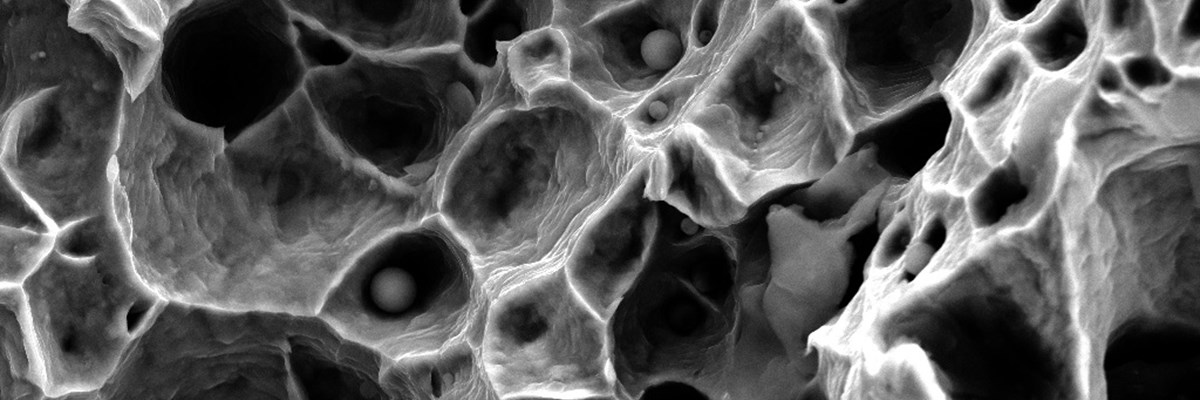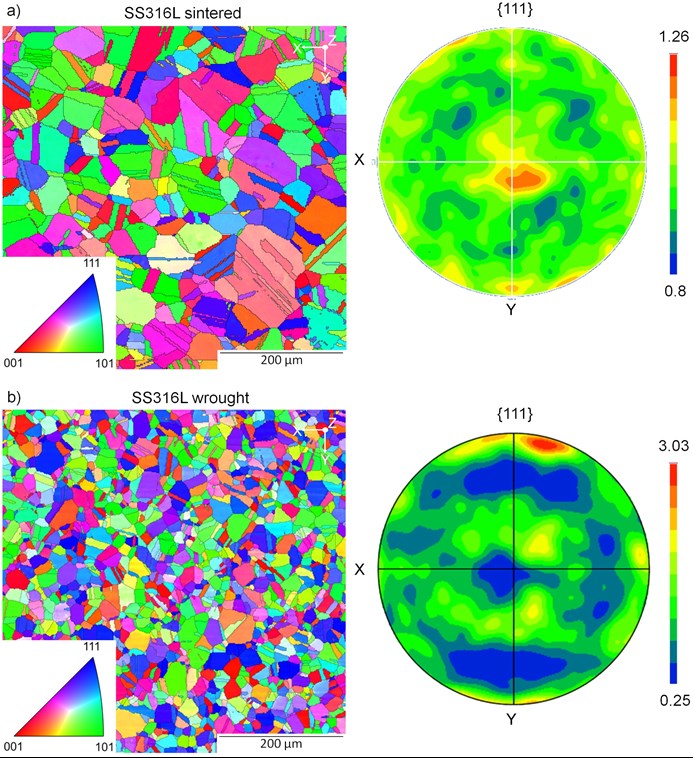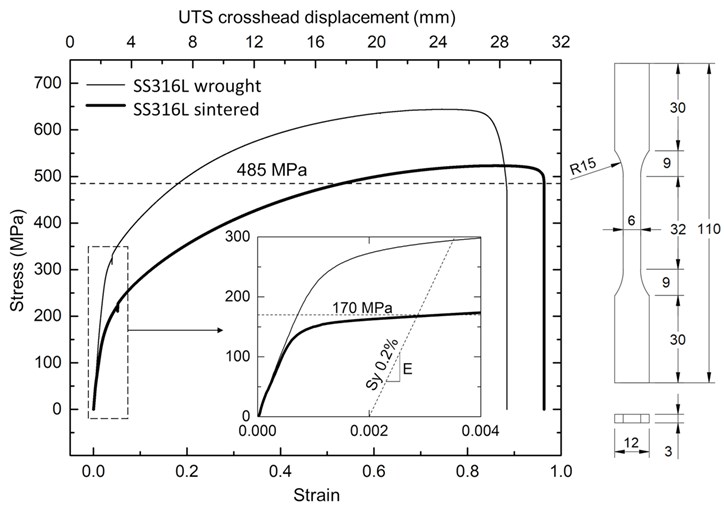Microstructure and mechanical behaviour of 316L stainless steel produced using sinter-based extrusion additive manufacturing

Overview
Additive manufacturing (AM), also known as 3D printing, is a general term covering those technologies that allow for fabrication of complex physical objects from digital data by the successive addition of material. 316L stainless steel (SS316L) has been widely used in the resource sector due to its favourable corrosion behaviour and good formability. Thus, investigating the relationship between its printing variables, microstructure and macro-scale properties is a key for the further development and wider adoption of metal AM. So far majority of the additively manurfatured 316L SS were produced using techniques such as direct energy deposition and powder bed fusion. Major issues of these methods are their initial capital costs, the safety concerns of working with loose powder and high-energy sources, and the anisotropic nature of microstructures producing columnar grains.
In recent years, the issues of DED and PBF methods have been addressed by combining the low cost of material-extrusion 3D printing techniques such as fused filament fabrication (FFF) with the strengthening steps of metal injection moulding (MIM). This combined AM technology is referred as metal-FFF, and recent investigations on the manufacture of SS316L have reported porous sintered materials having a relatively large distribution of grains and a ductile behaviour. Nevertheless, a thorough metallurgical analysis linking the effects of sintering to the observed microstructures, tensile properties and fracture mode, was still missing.

Figure 1. EBSD measured inverse pole figure maps of the: a) SS316L sintered and, b) SS316L wrought sample with corresponding {111} pole figures.
Objectives
The objective of this work was to investigate the relationship between the microstructures, the tensile properties and the fracture mechanism of additively manufactured SS316L. The alloy was produced using a sinter-based extrusion process commercially known as Bound Metal Deposition™ (Desktop Metal®, DM) using the Studio System™ (DM) technology. A detailed morphological and microstructural characterisation was carried out using scanning and transmission electron microscopy (SEM and TEM, respectively) and microanalytical techniques, such as electron backscattered diffraction (EBSD) and energy dispersive spectroscopy (EDS). Based on the findings, a mechanism explaining the departure from the typical cup-and-cone ductile fracture in the necked region observed in the printed samples was outlined. The wrought condition of the SS316L specimens was also tested and analysed, and the results were compared to gain a better understanding of the mechanical and chemical performance of the sintered SS316L material. Some of these comparative results showing the correlation between microstructure and tensile properties are shown in Figure 1 and Figure 2. These figures clearly depict how the relative larger average grain size of the sintered SS316L produces, for instance, a lower yield and tensile strength in the material. Results were also benchmarked with the literature covering SS316L manufactured by direct energy deposition and powder bed fusion.

Figure 2. Mechanical properties of the SS316L sintered and wrought samples
Why is this important?
Having an in-depth understanding of the relationship between the manufacturing variables of 3D printed materials with their final microstructures and engineering performance, enables the optimisation of AM processes to produce better alloys. For instance, lowering the sintering temperature and/or shortening the dwell time is expected to increase the yield strength of the metal-FFF manufactured SS316L by reducing its average grain size. However, this might also increase its final porosity content thus affecting its localised corrosion resistance. Thus, a balance in engineering properties should be obtained by optimising the manufacturing parameters to produce a standard grade material.
Citation
R. Santamaria, M. Salasi, S. Bakhtiari, Garry Leadbeater, Mariano Iannuzzi & Md Zakaria Quadir . Microstructure and mechanical behaviour of 316L stainless steel produced using sinter-based extrusion additive manufacturing. J Mater Sci (2022). https://doi.org/10.1007/s10853-021-06828-8

